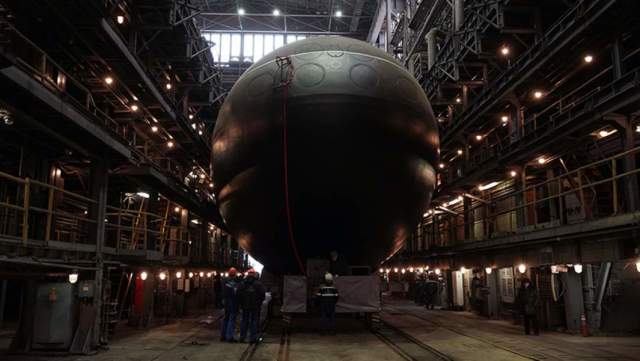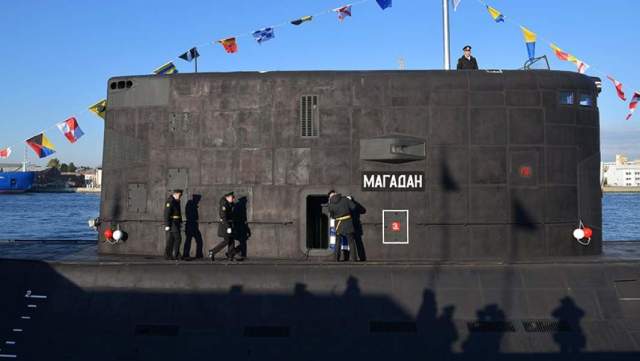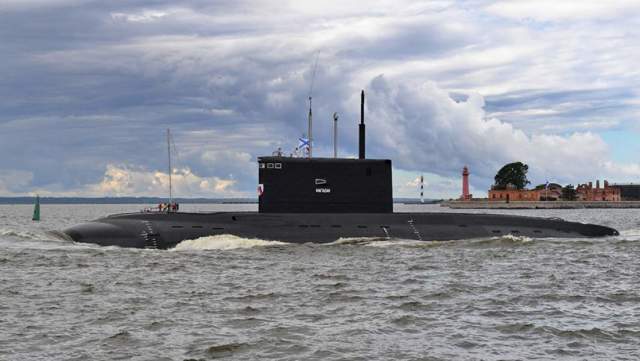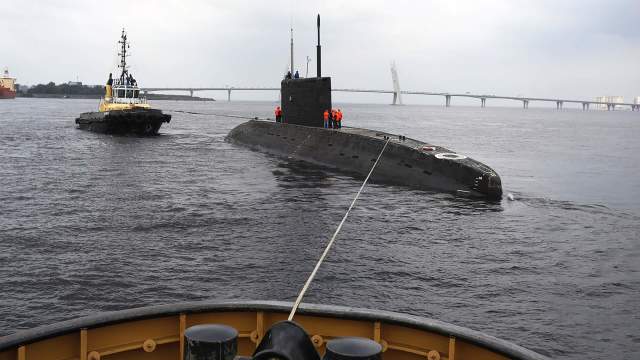TFO is preparing to receive the third of six non-nuclear submarines of the 06363 seriesIn the near future, the combat strength of the Pacific Fleet of the Russian Navy will be replenished by a new unit — the non-nuclear submarine of project 06363 "Magadan".
Construction of a series of six submarines of this project for the Pacific Fleet began in 2017 at the Admiralty Shipyards shipyard in St. Petersburg. The Magadan is already the third submarine to leave for the Far East. And after it, the fourth one will be completed — "Ufa". How will these submarines change the combat capabilities of the fleet and what are their features?
A long history
"Magadan" and "Ufa" were laid down at the Admiralty Shipyards at the same time — on November 1, 2019. There is a twofold relationship to the submarines of project 06363. On the one hand, they are often called a "black hole in the ocean" — because they are very difficult to detect. On the other hand, the opinion is expressed that 06363 is morally outdated — after all, all these submarines belong to the Varshavyanka family of projects, the construction of which was started back in the USSR in the 1980s.
The USSR, and then Russia, is one of the largest manufacturers and operators of non—nuclear submarines in the world. In Soviet times, they were the ones who made up a fairly large proportion of the submarine forces. Moreover, back in the 1990s, very exotic versions of boats developed in the 1950s and 1960s could be found in the fleet. By the 2010s, only ships built in the 1980s and 1990s remained in service, which can be attributed to a large family of boats of projects 877 / 636. In the media they are often called "Varshavyanka". These are the so—called big boats - no one in the world is building larger non-nuclear submarines now, because there is no point in this. Larger boats now all carry a nuclear power plant.

Diesel-electric submarine of project 636.3 "Magadan" "Magadan" on the slipway of the Admiralty Shipyards plant at the launching ceremony. March 26, 2021
Image source: Photo: RIA Novosti/Alexey Danichev
The creation of a large diesel-electric submarine of the most advanced type at that time was started according to the tactical and technical task approved by the USSR Navy in 1974. The design was carried out by the Rubin Design bureau from Leningrad under the direction of Chief designer Yuri Kormilitsyn. The laying of the lead boat B-248 of Project 877 took place on March 16, 1980 in Komsomolsk-on-Amur. In September 1980, she was launched, and on December 31, 1980, she was handed over to the Pacific Fleet.
Commissioning and testing continued until 1982, after which large-scale production began at four enterprises at once. The Lenin Komsomol Plant in Komsomolsk-on-Amur built 15 boats of this project, Krasnoe Sormovo in Nizhny Novgorod — 17, Leningrad Admiralty Association — 7 and Admiralty Shipyards - 11. The main construction of boats of this family in the late 1990s and in the 2000s was carried out for export - to China, India and Iran.
Underwater export
Interestingly, only the export submarines of Project 877, or rather Project 877E ("export"), which were produced since 1985 and were delivered to the Warsaw Pact countries, Poland (B—351 / Orzel) and Romania (B-801 / Delfinul), were called "Varshavyanka". For sale abroad in different years and at different factories, improved boats of the project 877M ("modernized") were produced, similar to them in their capabilities and technical design of the boats of the project 636 and the "export commercial" version of the 877EKM. The latter was supplied to Algeria, India, China and Iran. Boats of this type were adapted to tropical operating conditions and armed with cruise missiles of the Club-S export complex, which were used from torpedo tubes.

Servicemen of the Russian Navy at the solemn ceremony of raising the St. Andrew's flag on a diesel-electric submarine of project 636.3 "Magadan"
Image source: Photo: RIA Novosti/Alexander Galperin
In the 2000s, the 636 project was radically redesigned in terms of equipment and weapons complex, received all the best developments of its time. The 636M was equipped with the latest inertial navigation system, a periscope with a night vision channel, a TV channel and a laser rangefinder, a new weapons system with the possibility of using Kalibr-PL cruise missiles. Several boats of the 636M project were delivered to China, Algeria and Vietnam.
Finally, after a rather long break, it was decided to build non-nuclear submarines of the 06363 project for the Russian Navy, which is an improved modification of the 636M. In 2010, the construction of the first series of six boats for the Russian Black Sea Fleet began at Admiralty Shipyards in St. Petersburg. To date, all boats of this series have been built, commissioned into the fleet and even participated in operations against terrorists in Syria. Since 2017, a similar series of six boats for the Pacific Fleet has been under construction.
Area defense
One of the main tasks of the modern Pacific Warshavians will be to defend the "areas" of their fleet, for example, areas patrolling strategic nuclear submarines. In terms of noise and their combat capabilities, modern non—nuclear boats can compete with nuclear attack boats, and when solving defensive tasks — when it is not necessary to make long high-speed stretches under water - such boats can fight with the boats of a potential enemy on equal terms.

Diesel-electric submarine of project 636.3 "Magadan" on the Kronstadt raid at the Main Naval Parade on the Day of the Navy
Image source: Photo: RIA Novosti/Alexander Galperin
The Kalibr-PL missile system allows the use of cruise missiles from torpedo tubes to hit any ground targets at a range of up to 2500 km. And in addition — to use modern anti—ship cruise missiles that can effectively work on carrier strike groups while simultaneously striking from different directions - project 06363 can use such a variant of "Calibers" at a range of at least 500-700 km.
Of course, nuclear—powered ships have their advantages - autonomy, speed, quiet running at high speeds, conditional absence of restrictions on the number of missiles and torpedoes. But for many tasks, these are redundant features. Again, project 06363 with all the modern stuffing, our industry can build at a pace that the fleet needs right now. After Magadan, Ufa will complete the tests. The last two boats intended for the Pacific Fleet, Mozhaysk and Yakutsk, are already being completed.
Dmitry Kornev

